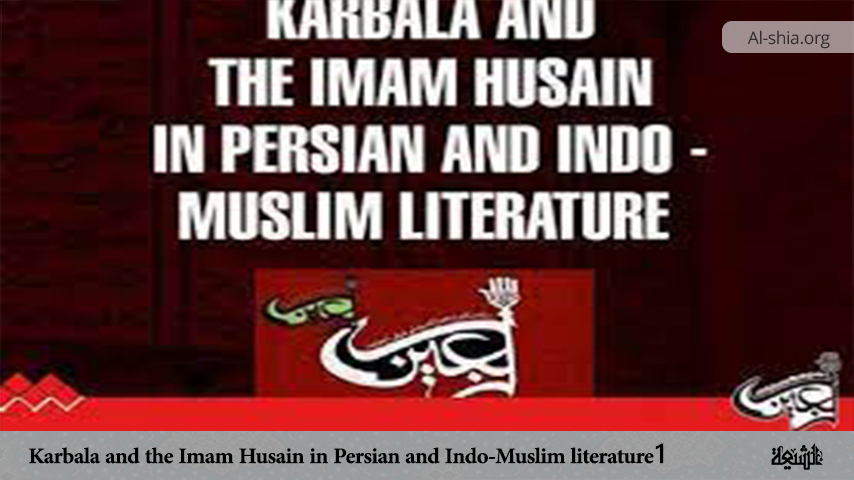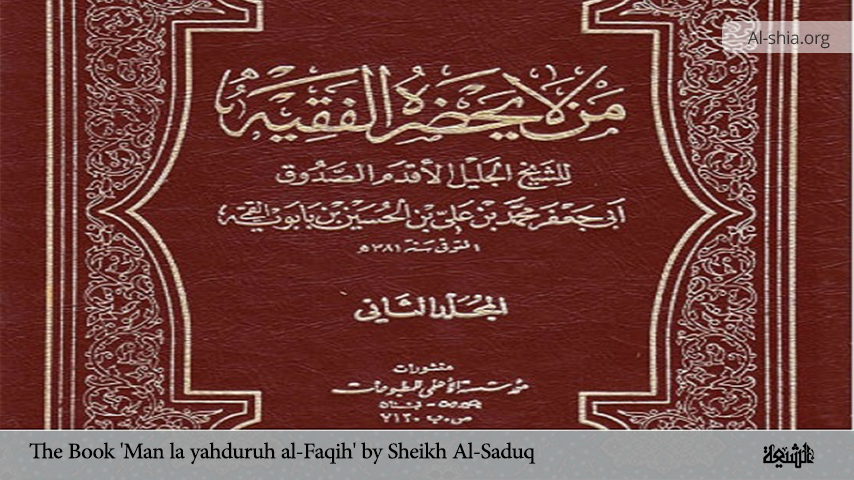I still remember the deep impression which the first Persian poem I ever read in connection with the tragic events of Karbala’ left on me. It was Qaani’s elegy which begins with the words:
What is raining? Blood.
Who? The eyes.
How? Day and night.
Why? From grief.
Grief for whom? Grief for the king of Karbala‘
This poem, in its marvelous style of question and answer, conveys much of the dramatic events and of the feelings a pious Muslim experiences when thinking of the martyrdom of the Prophet’s beloved grandson at the hands of the Umayyad troops. The theme of suffering and martyrdom occupies a central role in the history of religion from the earliest time. Already, in the myths of the ancient Near East, we hear of the hero who is slain but whose death, then, guarantees the revival of life: the names of Attic and Osiris from the Babylonian and Egyptian traditions respectively are the best examples for the insight of ancient people that without death there can be no continuation of life, and that the bloodshed for a sacred cause is more precious than anything else.
Sacrifices are a means for reaching higher and loftier stages of life; to give away parts of one’s fortune, or to sacrifice members of one’s family enhances one’s religious standing; the Biblical and Qur’anic story of Abraham who so deeply trusted in God that he, without questioning, was willing to sacrifice his only son, points to the importance of such sacrifice. Iqbal was certainly right when he combined, in a well known poem in Bal-i Jibril (1936), the sacrifice of Ismail and the martyrdom of Husain, both of which make up the beginning and the end of the story of the Ka’ba.
Taking into account the importance of sacrifice and suffering for the development of man, it is not surprising that Islamic history has given a central place to the death on the battlefield of the Prophet’s beloved grandson Husain, and has often combined with that event the death by poison of his elder brother Hasan. In popular literature we frequently find both Hasan and Husain represented as participating in the battle of Karbala’, which is historically wrong, but psychologically correct. It is not the place here to discuss the development of the whole genre of marthiya and taziya poetry in the Persian and Indo-Persian world, or in the popular Turkish tradition.
But it is interesting to cast a glance at some verses in the Eastern Islamic tradition which express predominantly the Sunni poets’ concern with the fate of Husain, and echo, at the same time, the tendency of the Sufis to see in him a model of the suffering which is so central for the growth of the soul. The name of Husain appears several times in the work of the first great Sufi poet of Iran, Sana’i (d. 1131). Here, the name of the martyred hero can be found now and then in connection with bravery and selflessness, and Sana’i sees him as the prototype of the shahid, higher and more important than all the other shahids
who are and have been in the world:
Your religion is your Husain, greed and wish are your pigs and dogs.
You kill the one, thirsty, and nourish the other two.(1)
This means that man has sunk to such a lowly state that he thinks only of his selfish purposes and wishes and does everything to fondle the material aspects of his life, while his religion, the spiritual side of his life, is left without nourishment, withering away, just like Husain and the martyrs of Karbala’ were killed after nobody had cared to give them water in the desert. This powerful idea is echoed in other verses, both in the Divan and in the Hadiqat al-Haqiqa; but one has to be careful in one’s assessment of the long praise of Husain and the description of Karbala’ as found in the Hadiqa, as they are apparently absent from the oldest manuscripts of the work, and may have been inserted at some later point. This, however, does not concern us here.
For the name of the hero, Husain, is found in one of the central poems of Sana’is Divan, in which the poet describes in grand images the development of man and the long periods of suffering which are required for the growth of everything that aspires to perfection. It is here that he sees in the ‘street of religion’ those martyrs who were dead and are alive, those killed by the sword like Husain, those murdered by poison like Hasan.(2) The tendency to see Husayn as the model of martyrdom and bravery continues, of course, in the poetry written after Sana’i by Persian and Turkish mystics, and of special interest is one line in the Divan of ‘Attar (nr. 376) in which he calls the novice on the path to proceed and go towards the goal, addressing him:
Be either a Husain or a Mansur.
That is, Husain b. Mansur al-Hallaj, the arch-martyr of mystical Islam, who was cruelly executed in Baghdad in 922. He, like his namesake Husain b. ‘Ali, becomes a model for the Sufi; he is the suffering lover, and in quite a number of Sufi poems his name appears alongside that of Husain: both were enamoured by God, both sacrificed themselves on the Path of divine love, both are therefore the ideal lovers of God whom the pious should strive to emulate. Ghalib skillfully alludes to this combination in his tawhid qasida: God has kept the ecstatic lovers like Husain and Mansur in the place of gallows and rope, and cast the fighters for the faith, like Husain and ‘Ali, in the place of swords and spears: in being martyrs they find eternal life and happiness and become witnesses to God’s mysterious power.
This tradition is particularly strong in the Turkish world, where the names of both Husains occur often in Sufi songs. Turkish tradition, especially in the later Bektashi order, is deeply indebted to Shi’i Islam; but it seems that already in some of the earliest popular Sufi songs in Turkey, those composed by Yunus Emre in the late 13th or early 14th century, the Prophet’s grandsons played a special role. They are described, in a lovely song by Yunus, as the ‘fountain head of the martyrs’, the ‘tears of the saints’, and the ‘lambs of mother Fatima’. Both of them, as the ‘kings of the eight paradises’, are seen as the helpers who stand at Kawthar and distribute water to the thirsting people, a beautiful inversion of Husain suffering in the waterless desert of Karbala’.(3)
The well known legend according to which the Prophet saw Gabriel bring a red and a green garment for his two grandsons, and was informed that these garments pointed to their future deaths through the sword and poison respectively, is mentioned in early Turkish songs, as it also forms a central piece of the popular Sindhi manaqiba which are still sung in the Indus Valley. And similar in both traditions are the stories of how the boys climbed on their grandfather Prophet’s back, and how he fondled them. Thus, Hasan and Husain appear, in early Turkish songs, in various, and generally well known images, but to emphasize their very special role, Yunus Emre calls them ‘the two earrings of the divine Throne’ (4).
The imagery becomes even more colorful in the following centuries when the Shi’i character of the Bektashi order increased and made itself felt in ritual and poetical expression. Husain b. ‘Ali is ‘the secret of God’, the ‘light of the eyes of Mustafa’ (thus Seher Abdal, 16th cent.), and his contemporary, Hayrettin, calls him, in a beautiful marthiya, ‘the sacrifice of the festival of the greater jihad’. Has not his neck, which the Prophet used to kiss, become the place where the dagger fell? The inhabitants of heaven and earth shed black tears today. And have become confused like your hair, O Husain. Dawn sheds its blood out of sadness for Husain, and the red tulips wallow in blood and carry the brand marks of his grief on their hearts … (5).
To be continued!
NOTES:
______________________________________________
1. Divan, p. 655.
2. Divan 485.
3. Yunus Emre Divani, p. 569.
4. Divan, p. 569.
5. Ergun, Bektasi sairleri, p. 95.

















